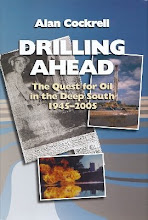You all know I don’t normally comment on current events in aviation—preferring instead to muse upon the human experience of flight, which is why I avoid all talk about Mayasian Flight—whatever the number. My guess about the lost 777 is as good as yours. But this business about the boy who rode the 767 wheel well to Maui is too compelling to ignore. I won’t go into details because this blog’s readers know them already. The question is, is it true or a hoax?
I remember way back in 1972 when my friend Steve Hart volunteered to remove his oxygen mask at 35,000 feet in the Vance altitude chamber. Steve was a big, healthy lumberjack type of lad from Oregon, a little oafish but one of the most likeable characters in the class. Steve was also naïve and had not yet learned that the act of volunteering in the military has more downside potential than upside. The rest of us were admonished to watch Steve and relate what we observed, from his sacrificial shedding of his mask, with what we had learned in the classroom about TUC (“Time of Useful Consciousness”).
TUC is self-explanatory. Obviously, you can be awake but not useful at the controls of an aircraft—a passenger none-the-less. Depending on which source you look at, TUC (at 35,000’) can range from 30 seconds to 2 minutes, depending on the age, sex, weight, and physical condition of the ill-fated subject who experiences it. Steve, with his youth, strong body and robust disposition would tend toward the long end of the aforementioned TUC range—or so the classroom instructor had us believe. Steve and I being buddies, I was sitting beside him when the ruckus broke out.
Two instructors wearing “walk-around” oxygen bottles closed in to be of assistance if needed. One asked Steve, via intercom, if he was ready. He nodded awkwardly (which is the only way you nod when wearing a helmet and mask, and all the flailing accoutrements that go with them). Steve also punched his mic button and tried to verbally answer “yes,” but against the onrush of pressurized oxygen being forced into his mouth and nose, we all heard only a hissing, croaking, guttural grunt.
His big hand reached to the side of his helmet and fumbled clumsily at the mask attachment fitting. We were all new to helmets and had not yet learned exactly how to attach or detach a mask without looking like a klutz. It embarrassed all of us until we learned the drill. Steve’s shaking hand fumbled for the release. Finally one of the instructors unlatched it for him. The mask dangled to the side of Steve’s face. I leaned out and peered to the side. Steve’s eyes were the size and shape of dinner plates. He cut them toward me. Then hell broke loose when Steve’s TUC terminated—in about ten seconds.
He became a wild man. His body convulsed and bucked. His arms flailed and jerked. He half arose, half fell from his seat. The two instructors moved in and tried to re-attach the mask but could not get past the strong fighting, flailing arms. Finally they succeeded as Steve began to expire. It was clear to us all that death would have come quickly had they not gotten his lifeline back on him.
The rest of us sat astounded, sucking our O2, watching the color slowly return to Steve’s face, watching his eyes become clear again. The demonstration over, they slowly re-pressurized the chamber and as we “descended” Steve became his jovial self again but remembered absolutely nothing after pulling that bayonet latch from its tunnel on the side of his helmet.
That taught us a lesson we never forgot about TUC, but more importantly it taught us that man was not meant to fly high up where the air molecules are far apart. We weren’t built for that and when we venture into those regions we should never take for granted that we are teasing Mother Nature with our daringness and our engineering feats. She always bides her time and waits for the technology to break down.
Then comes along a dumb-ass teenager who allegedly soars to 38,000 feet and sleeps peacefully and warmly for 5 ½ hours until he touches down in balmy Hawaii, after which he sleeps for another hour atop his mystery bed.
I heard what a doctor said—it’s possible. I don’t believe it. It’s a hoax.
But more important is Steve’s story, and you knew I’d get back to the usual ponderings. Steve was a decent pilot, not Top Gun by any stretch of the imagination, but very average. He handled all the aircraft we flew well—the T-41, T-37 and T-38. But Steve’s nemesis was formation flying. With only a few weeks left in our year of pilot training Steve washed-out because he simply couldn’t fly stable formation. It didn’t matter that he was a good instrument and contact pilot, they wanted us to do it all, so they sent him home. Steve would have made an excellent aircraft commander on a large plane. Today the USAF would have let him continue on a multi-engine track, but this was 1972 and they thought everyone should be trained to be fighter pilots.
I’ll never forget that sad day when Steve said his good-byes to us all—we in our zoom-bags and he in his civvies. With wet eyes and the unsavory countenance of perceived failure, he drove his Chevy out the gate and into obscurity. Those of us in that class, Vance 73-06, who keep up with each other have often tried to contact Steve. If you know him, tell him we’re looking for him. Tell him we miss him and tell him we never thought for a second that he didn’t have those silver wings on his chest, where they deserve to be.




